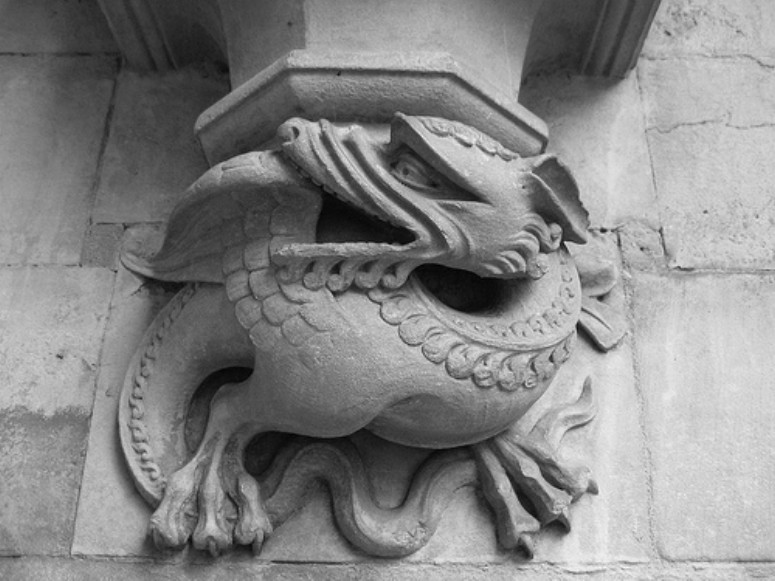 |

Wyvern |
WyvernThe wyvern is a mythological creature frequently found in European lore. The word "wyvern" comes from the Saxon wivere, meaning serpent. This legendary animal is usually defined as a subspecies of dragon, or at least the dragon's close kin. The dragon and the wyvern share many similarities in terms of appearance.
Stories about wyverns are rather contradictory. At times it is
represented as a smaller species of dragon, and at other times
it is defined as a larger dragon breed. In some accounts, they
are described to be so large as to prey on elephants and
rhinoceroses. Wyverns are commonly found in medieval heraldry and many institutions still use the wyvern in their heralds, crests, and coats of arms. In this regard, wyverns are seen as symbols of strength, power, and endurance. Examples of these emblems include arms of the Derby Midland railway station, the logo of the Dragon School in Oxford, England, and the arms of the Alpha Chi Sigma Fraternity.
Wyverns also make their appearance in popular culture. In Neil Gaiman's Sandman series, for instance, a doorkeeper to Dream's palace is a wyvern. Fantasy role-playing games such as Dungeons and Dragons and World of Warcraft also employ wyverns as part of their various mythologies.
Interestingly, a few cryptozoologists have been known to espouse the theory of wyverns being evidence that animals such as the pterosaurs, winged reptiles which died out about 65 million years ago, may have actually co-existed with human populations, and may in fact still exist today. Unfortunately, there is no evidence to support these claims. Other images of Wyverns from history and around the web.
|
|
| Web Design by Mike Lance | |




